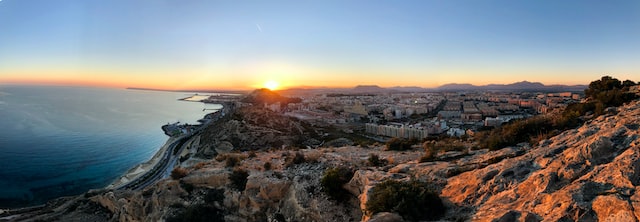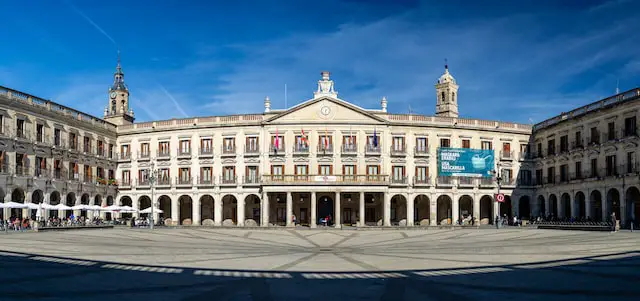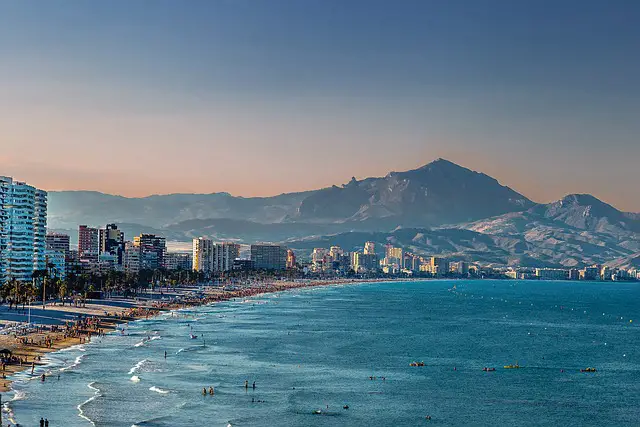
Europe, the old continent is not somewhere that as a whole is typically associated with water shortages. However, southern areas of Europe, particularly in recent times have come under serious water stress as populations surge and rainfall becomes more erratic. Southern Spain and Italy share a similar climate to North Africa, what is known as the Mediterranean climate (For obvious reasons), so it would make sense that Spain in particular is the European leader in desalination facilities. The question is though, which is the largest and what sort of technology does it use?
Torrevieja Desalination Plant is the largest desalination facility in Spain and Europe. Through reverse osmosis, the plant has a max output of 240,000 m³/day. Situated near Murcia in the Alicante province in the south of Spain, the Torrevieja plant services an arid region with a history of water shortages.
It produces 240,000 m³ of freshwater per day.

The Torrevieja Desalination facility has the capacity to produce 240,000 cubic metres of fresh water every day. This gives it first place in terms of capacity out of all desalination facilities in Europe, however, on the world stage this pales in comparison to some of the larger facilities in the middle east like Jebel Ali in Dubai and Ras al Khair in Saudi Arabia. If you are interested in finding out the top ten desalination facilities by capacity, I wrote a detailed article on the topic here that I encourage you to have a look at, The 10 Largest Desalination Plants In The World.
Every component in the plant has a backup.
To ensure a continuous supply in the case of breakdowns or scheduled repairs, the Torrevieja facility has a complete backup line of pipes, pumps, RO membranes etc to ensure that any disruption to the main lines can quickly be diverted to the backup modules. In terms of water security, the importance of this cannot be overstated, particularly in such an arid area like Torrevieja, the local industry simply cannot afford for the desalination plant to shut down for any period of time, the reputational damage would take years to come back from!
It is owned by the Spanish Government.

The Torrevieja Desalination Plant is 100% owned by Acuamed, a Spanish state-owned company. This detail is important as this allows the facility to ensure water supply for the surrounding populations rather than simply sell water to the highest bidder, which would be the case if it were privately owned.
Acuamed is the acronym for Aguas de las Cuencas Mediterráneas, which means in English ‘Waters of the Mediterranean Basins’. Acuamed is headquartered in Madrid and is tasked with the management of Spain’s scarce water resources including, aquifers, dams and in this case desalination plants.
The facility can operate with 20 workers and 2 Supervisors!
Surprisingly, this facility can, and does operate with two supervisors in the control room and around 20 workers throughout the facility, an impressive achievement of automation and streamlined processes when compared to some of the larger facilities in the middle east that requires thousands of workers to function efficiently! There are two reasons behind this stark difference in terms of manpower between Torrevieja and the middle east, one is obviously the size of the facility, although large it is ~10% of the size of Jebel Ali. The second is the cost of labour, the middle east relies on large migrant labour forces from India, Indonesia and Pakistan which represent a much more economical option than the Spanish workers who are of course a part of the EU.
It uses 100% reverse osmosis.
The Torrevieja facility operates entirely with reverse osmosis desalination modules, this is largely due to its recent commissioning and the push for energy efficiency as opposed to some of the larger multistage flash distillation operations around the world that are much less efficient. It would not make sense for a desalination plant in a country with such high energy costs as Spain to make use of any other desalination technique than RO. Despite its relative energy efficiency when compared to other desalination techniques, the Torrevieja facility has faced scrutiny in Spain due to its large energy bill, something that is quickly forgotten about in times of drought when the surrounding area is 100% dependent on the facility to survive!
Controversial Power consumption.

The facility is forecast to consume more than 300 Gigawatt hours per year, with an interesting comparison made that the facility consumes more energy than the entire tourist industry of the province of Alicante! Making such criticisms of the facility are often done with a political rather than practical goal in mind, logically speaking in order to sustain such a population in an arid area, even if only for a portion of the year there is no other real option other than unpopular water restrictions which would not bode well for the local industry.
It cost 300 million Euros to build.
Another source of controversy locally is the 300 million Euro price stage attached to Europe’s largest desalination plant. The plant was constructed by Acciona in 2007 and the same company continues to operate the facility. As with many government projects, the hefty price tag brought its fair share of criticism with local residents certain that the money could have been better spent elsewhere. The considerable financial losses incurred over the first years of operation also drew criticism locally, losing 55 million Euros due to delays with construction and Bureaucratic approvals, costs that need to be amortized across future production costs, technically increasing the price of the water produced.
The Impact To Marine Life Is Mitigated.
An often highlighted point of criticism to all desalination plants in terms of their impact on local marine life is the outflow of the highly saline brine. In the case of the Torrevieja plant, the bay of Murcia is home to fragile Neptune grass, so after an extensive environmental impact assessment huge diffusers were installed to actively disperse the brine as it is pumped back into the ocean with no noticeable fluctuation in salt levels, mitigating any risk to marine life.
https://hispagua.cedex.es/sites/default/files/hispagua_documento/BROCHURE%20DESALINATION%20IN%20SPAIN-1_0.pdf
acuamed.es/media/actuaciones/109/torrevieja-corta-def.pdf
informacion.es/vega-baja/2017/12/20/desalinizadora-torrevieja-principal-fuente-agua-5839878.html
informacion.es/vega-baja/2022/09/17/coste-energetico-desalinizadora-torrevieja-sera-75567848.html
abc.es/espana/comunidad-valenciana/abci-desaladora-torrevieja-consume-tanta-energia-como-turismo-toda-provincia-alicante-201807010816_noticia.html#:~:text=Con la anunciada ampliación para,al año%2C según el proyecto.
interempresas.net/Reciclaje/Articulos/456543-Descubre-visita-desde-casa-mano-ACCIONA-desaladora-Torrevieja-depuradora-Atotonilco.html
laverdad.es/murcia/20070226/region/comienza-construccion-torrevieja-mayor_200702261307.html
laverdad.es/murcia/201502/10/desalinizadora-torrevieja-pierde-millones-20150210020752-v.html


